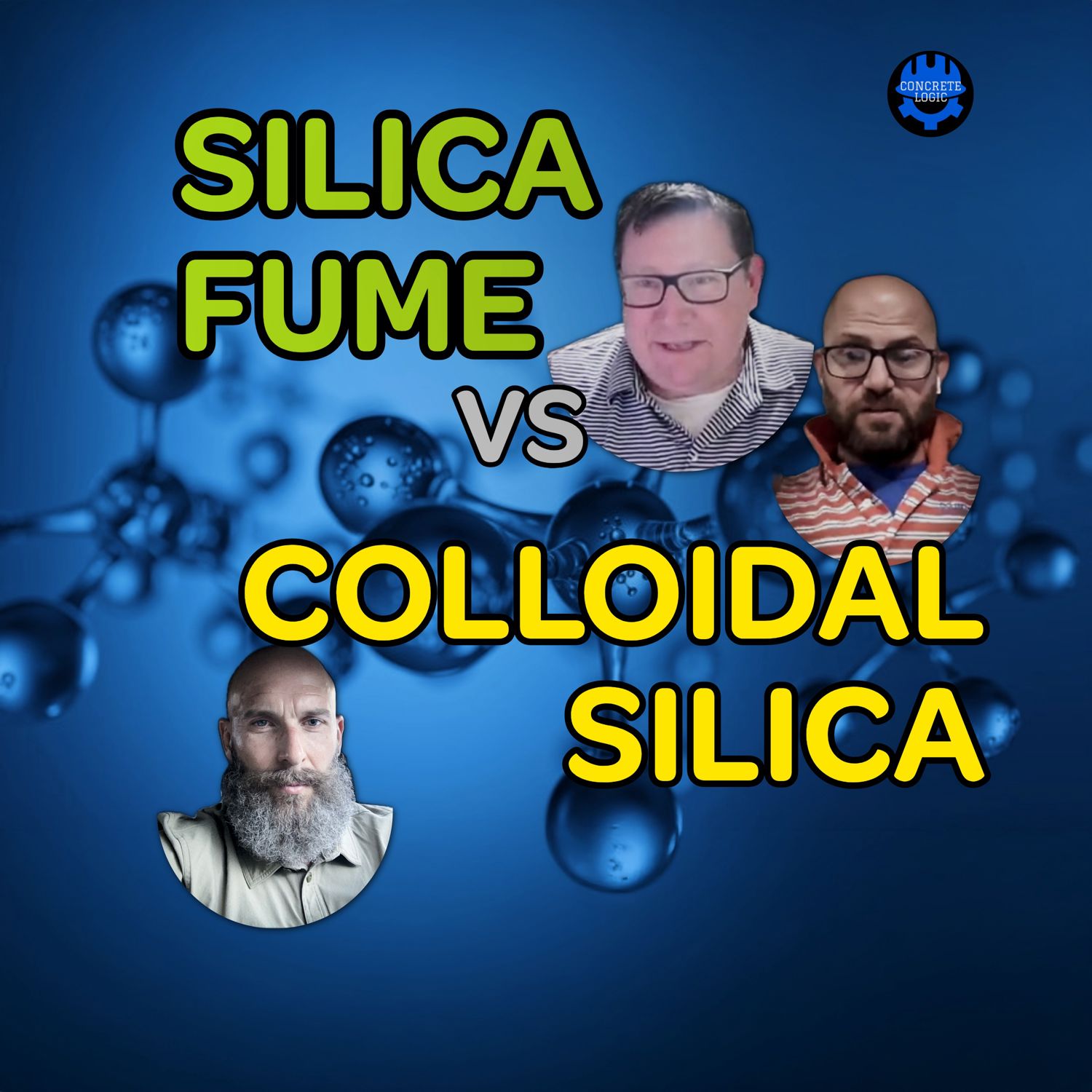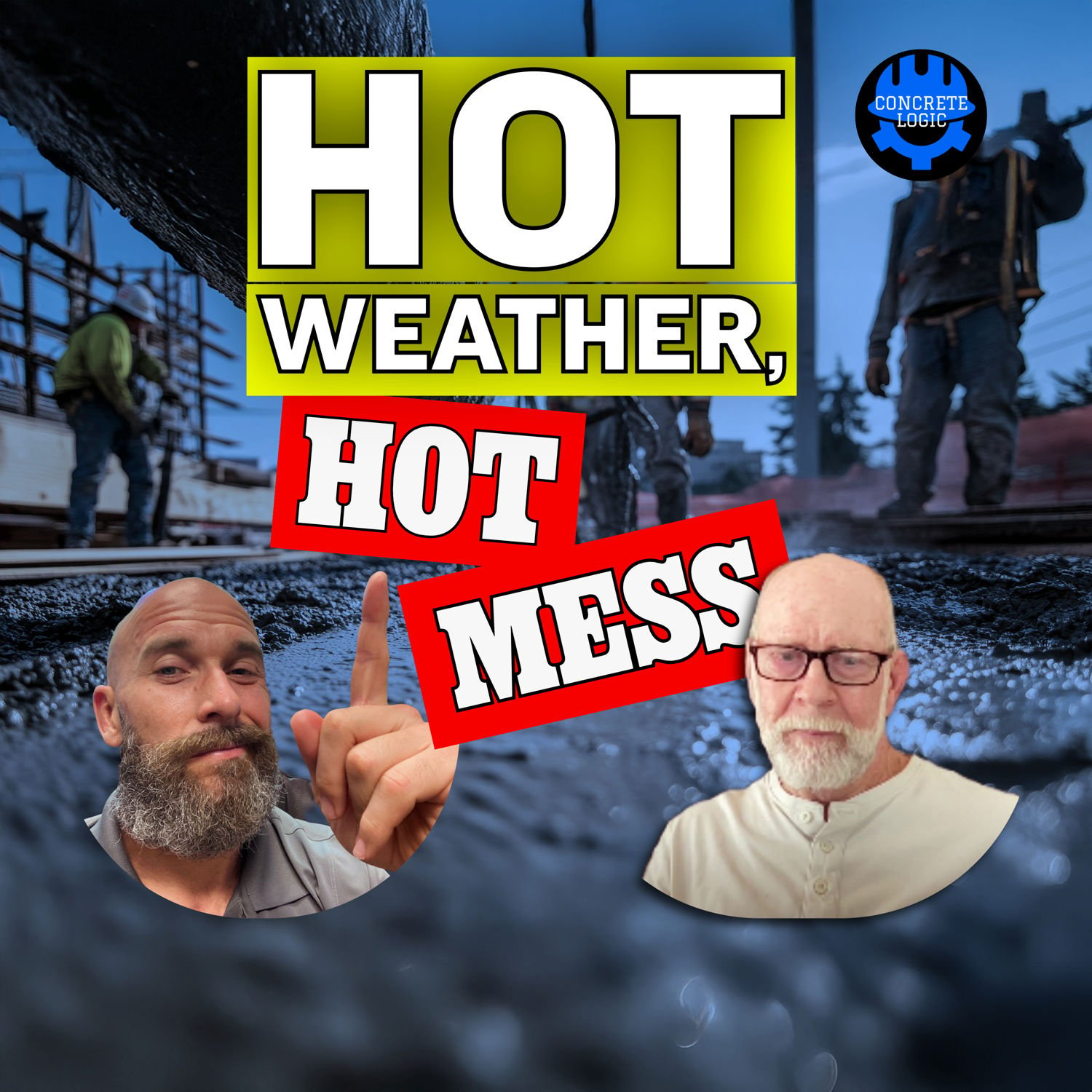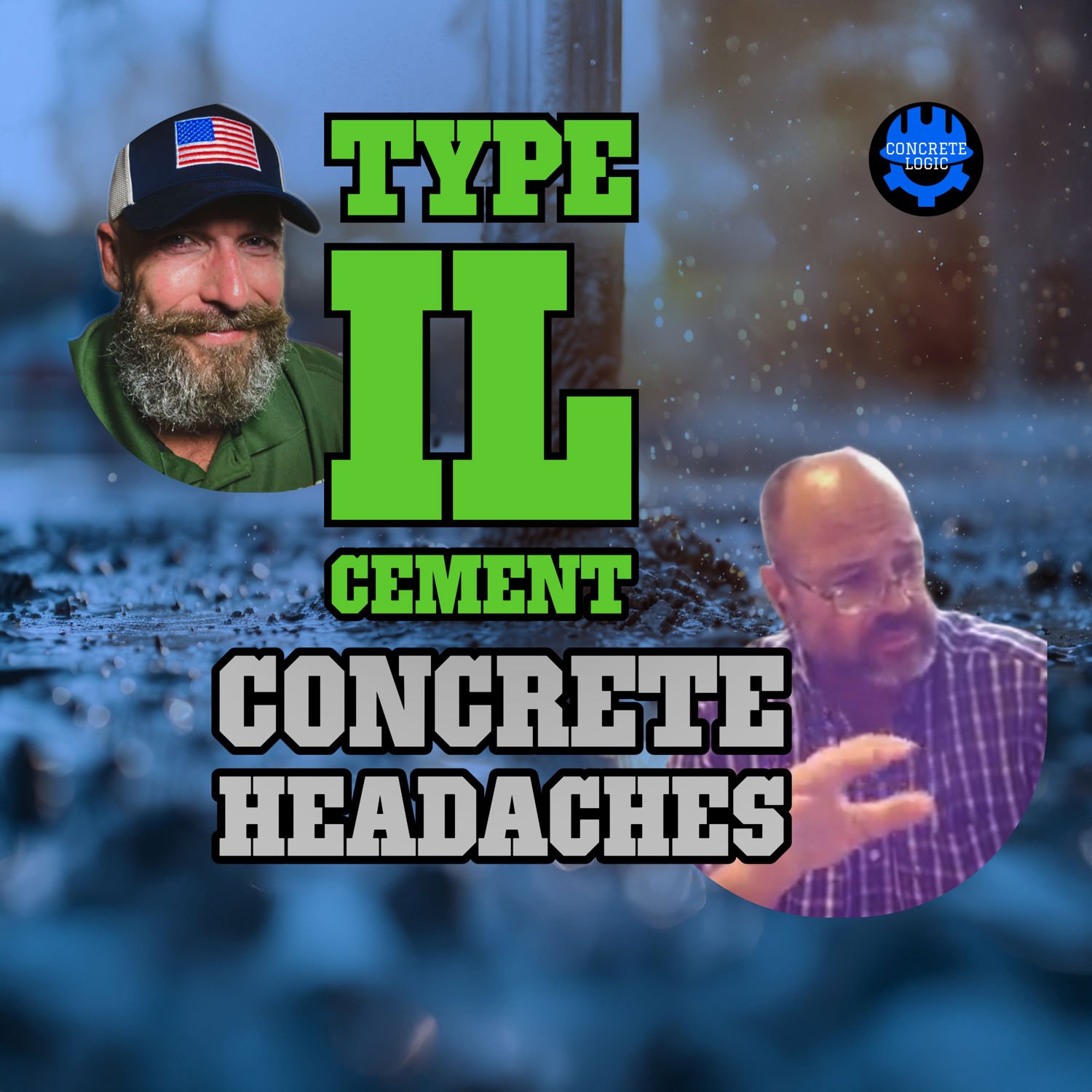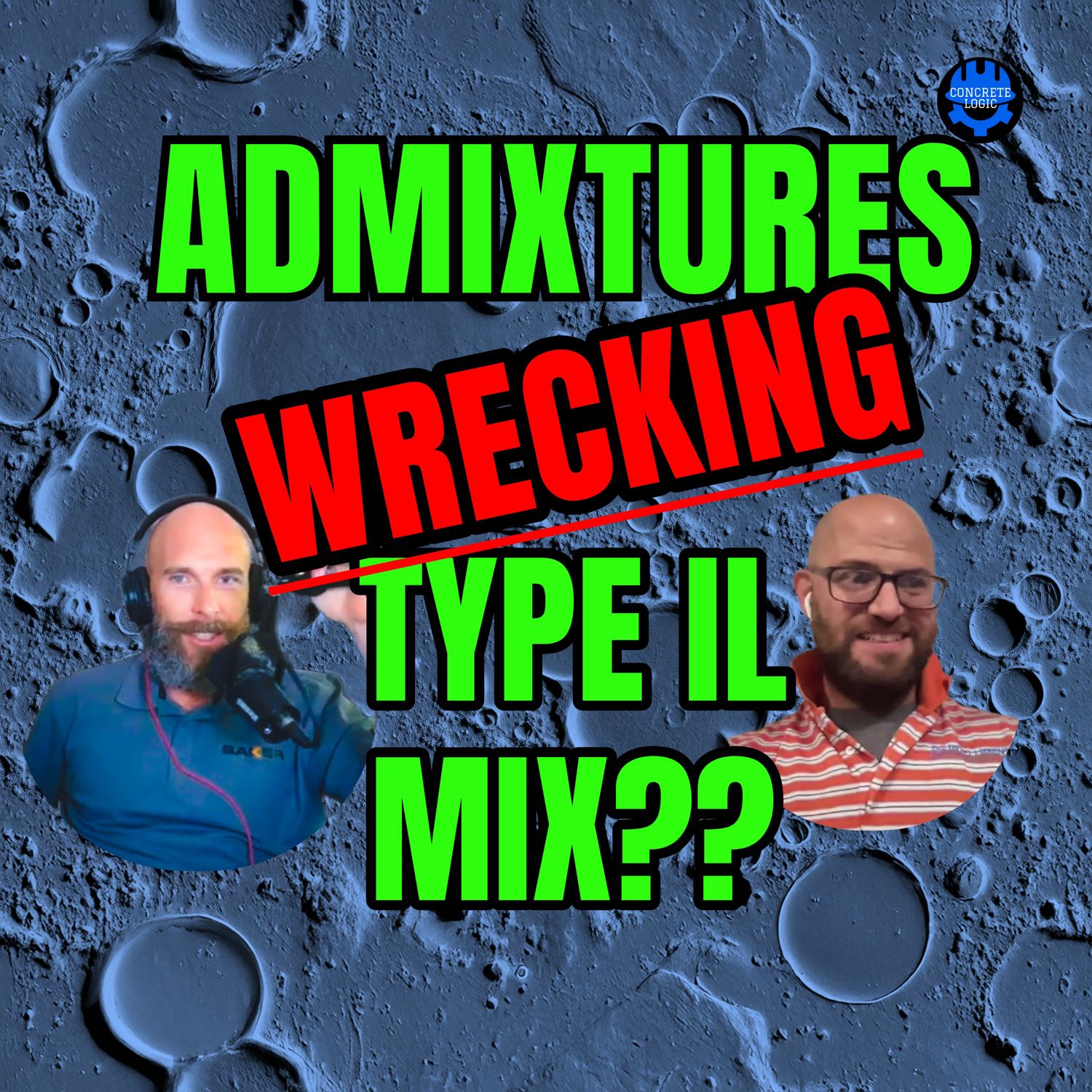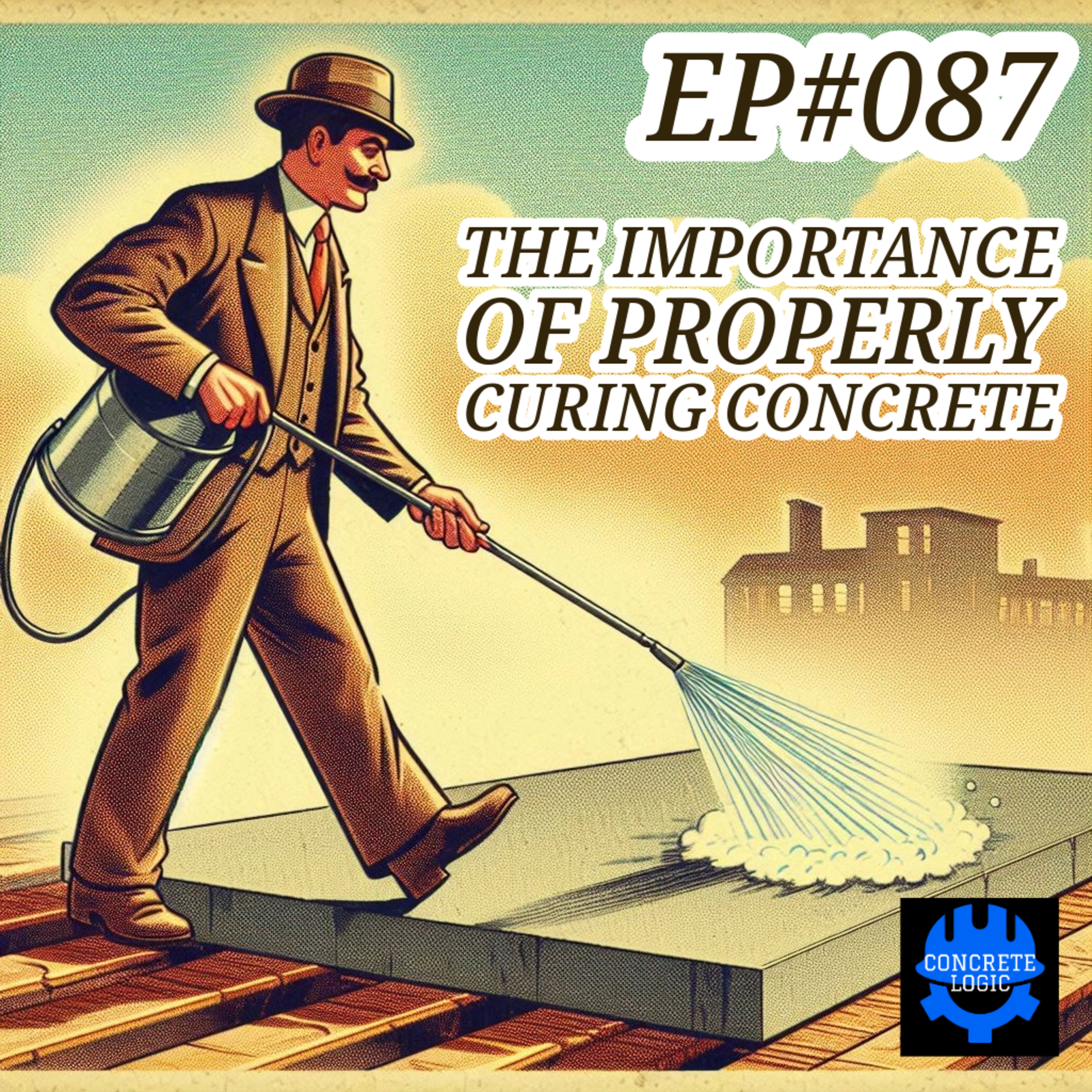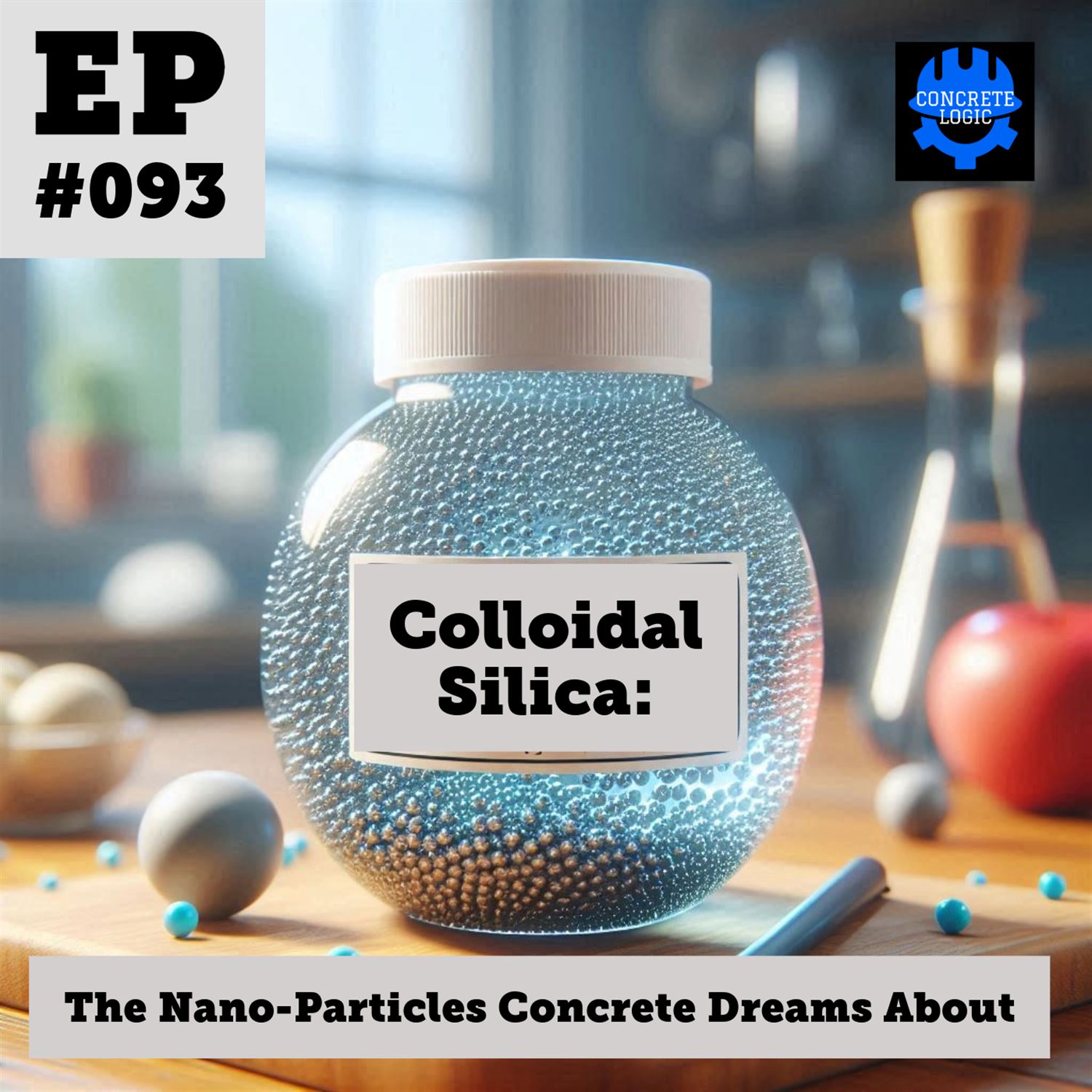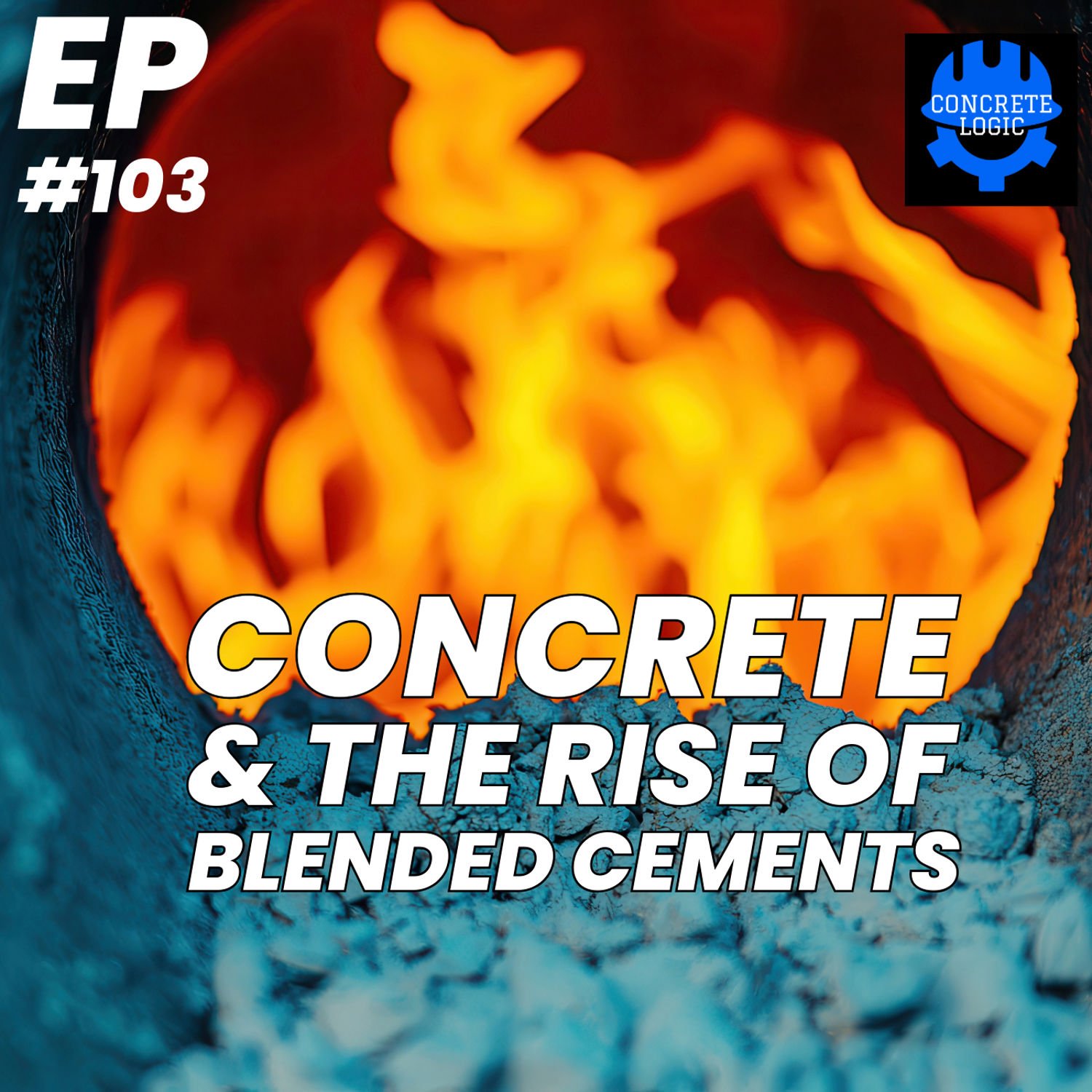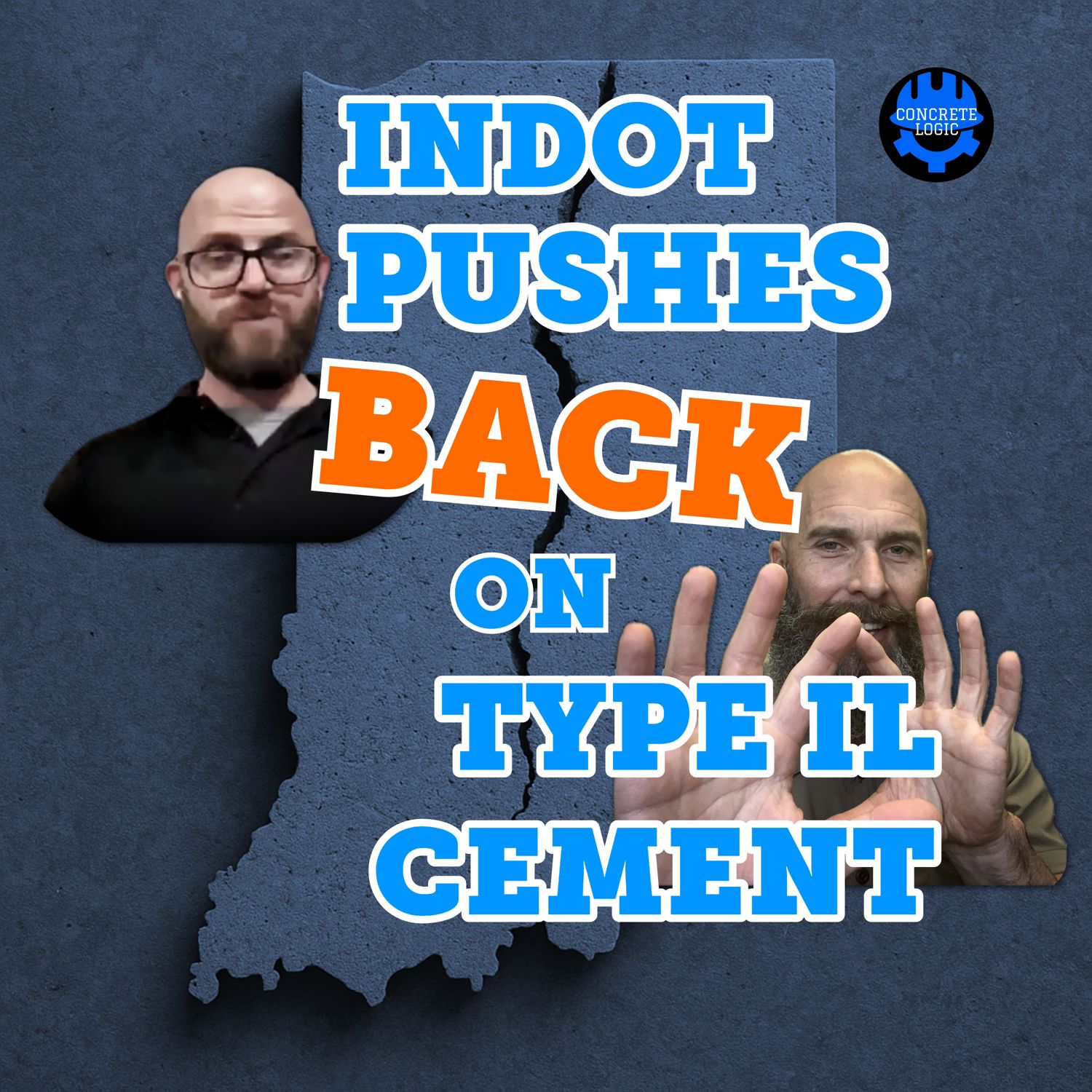EP #129: What Hoover Dam Concrete Can Teach Us Today
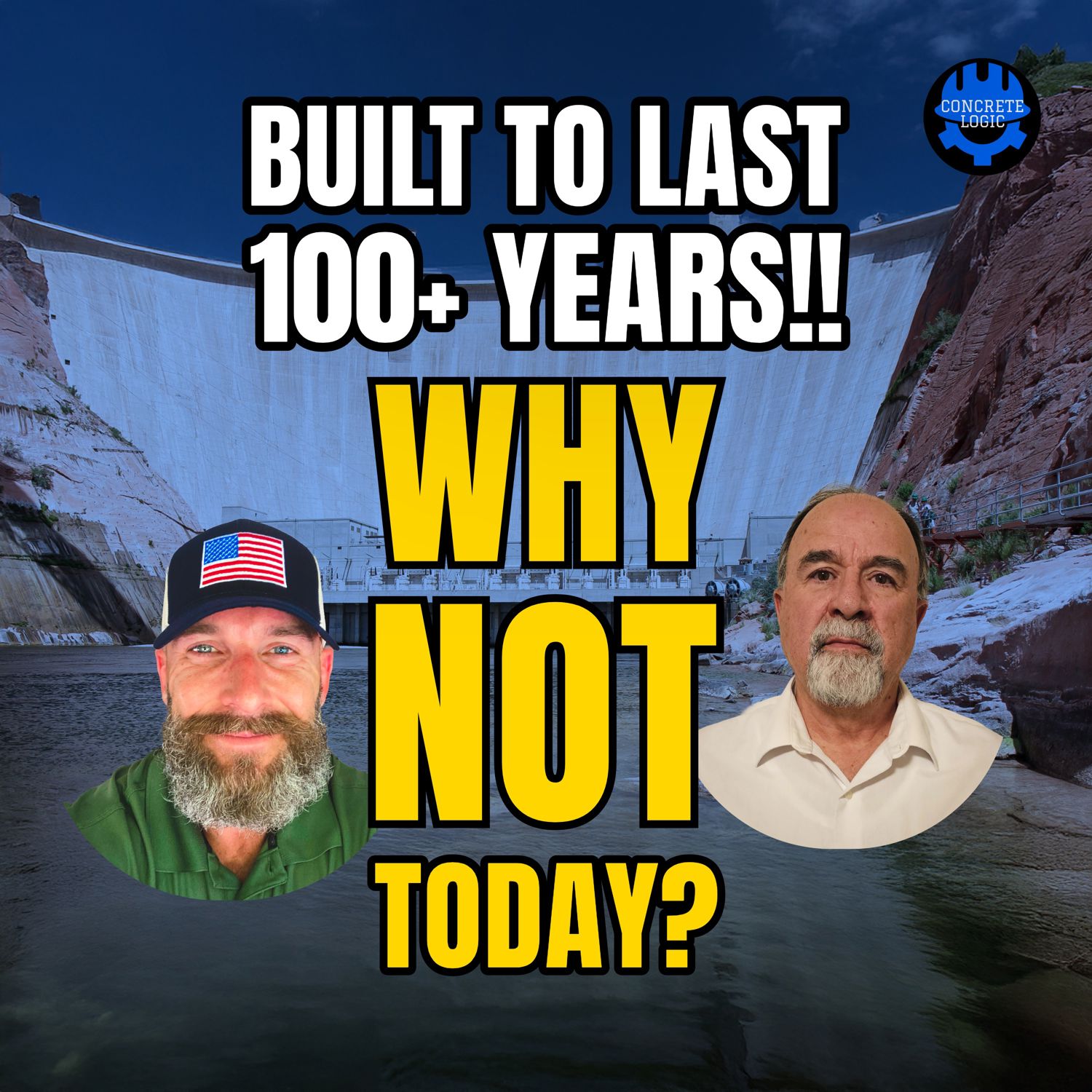
What if the answer to today’s concrete durability and sustainability challenges isn’t new—but something we left behind decades ago?
In Episode #129 of the Concrete Logic Podcast, host Seth Tandett talks with Joseph E. Thomas, Executive Director of the Natural Pozzolan Association, about a material used in the Hoover Dam and Roman aqueducts: natural pozzolans. Joseph explains how these natural pozzolans are making a quiet comeback and why they may deserve another look.
What You'll Learn:
- What exactly are natural pozzolans, and how do they compare to fly ash?
- Can natural pozzolans genuinely enhance concrete durability?
- Why have iconic structures like the Pantheon and Hoover Dam relied on natural pozzolans?
- What are the realistic limitations, such as water demand and regional availability?
- How natural pozzolans stack up against traditional cement and fly ash.
- Emerging trends and the growing role of activated pozzolans in construction.
Chapters:
00:00 - Intro
02:15 - Understanding Natural Pozzolans
07:30 - Historical Examples & Real-World Performance
14:05 - Benefits vs. Limitations in Today's Market
20:20 - Challenges: Water Demand & Availability
27:50 - Where Natural Pozzolans Fit in Future Projects
33:15 - Summary & Closing Thoughts
=============================
Take Your Knowledge Further – Join Concrete Logic Academy!
Gain access to expert video lessons, live Q&As, and professional development hours (PDHs). Learn what textbooks won’t teach you.
Start Learning: https://www.concretelogicacademy.com
Support the Podcast – Be Part of the Concrete Revolution!
Help us keep the Concrete Logic Podcast going strong. Your donation helps the entire concrete community get better and smarter.
Donate here: https://www.concretelogicpodcast.com/donate
Want your company to sponsor the podcast? Learn how: https://www.concretelogicpodcast.com/p/partner-with-concrete-logic-podcast/
Guest Information:
Joseph E. Thomas
Executive Director, Natural Pozzolan Association
Website: https://www.naturalpozzolan.org
Email: info@pozzolan.org
Producer: Jodi Tandett
Music by: Mike Dunton (Instagram: @Mike_Dunton)
Stay Connected & Watch More!
Host: Seth Tandett
Email: seth@concretelogicpodcast.com
LinkedIn: https://www.linkedin.com/in/seth-tandett/
YouTube: https://www.youtube.com/@concretelogicpodcast
Website: https://www.concretelogicpodcast.com
LIKE, SUBSCRIBE, COMMENT & SHARE for more concrete truth bombs.
00:44 - - Intro
02:59 - - Understanding Natural Pozzolans
08:14 - - Historical Examples & Real-World Performance
14:49 - - Benefits vs. Limitations in Today's Market
21:04 - - Challenges: Water Demand & Availability
28:34 - - Where Natural Pozzolans Fit in Future Projects
33:59 - - Summary & Closing Thoughts ============================= Take Your Knowledge Further – Join…
[00:00] Seth Tandett:
And welcome to another episode of the Concrete Logic Podcast. And today I have Joseph E. Thomas with me. He is the executive director of Natural Pozzolin Association. And he's going to come on the show. think we've, I was sharing with Joseph, before we hit record that I, we've, we've, believe we've done an episode on Natural Pozzolin, but it's been so long ago that I think it's good to go back and,
We haven't had Joseph on the show, so it's good to hear from other folks about the same topics and definitely want to kind of do a refresher as well. So we're going to talk about what natural pozzolin is, how it's used in concrete, how it has been used, how it's currently been used, and what the future of natural pozzolins are. Joseph?
Is there anything you want to share with the audience before we get started? Did I do a okay job of introducing you?
Joseph E. Thomas [00:52]
Perfect, perfect. I appreciate you being, inviting me onto your show and I look forward to the discussion.
[00:58] Seth Tandett:
Yeah, this was a long time coming. He can, yeah, we kind of circled and circled around and that's, Joseph was a actual, suggestion from someone, from a listener and a supporter of the show. So I always, when I find someone that's willing to do this and we don't align schedules initially, I don't, I don't quit. I'm relentless. I will, I will.
Stick with them till they decide that we can find a time to do it together. And Joseph is a great example of that. And I appreciate you coming on the show. So Joseph, you share, just as a refresher, what a natural pozzolin is and how it's used in concrete?
Joseph E. Thomas [01:39]
Sure, natural pozzolans are similar to fly ash. Most people in the concrete industry are familiar with fly ash. The difference is natural pozzolans are naturally occurring materials, mostly volcanic in origin. So when you think of pumice and pumicite and perlite and obsidian and tephra and tuff,
There's so many different variations of volcanic materials, but as long as it's a rhyolitic volcanic material, it has potential to be a natural poslin. And in terms of what they do, of course, like the fly ash, they react with the calcium hydroxide within the concrete matrix to make additional
calcium silicate hydrate, which is the binder in concrete. So it densifies concrete, makes it less permeable, makes it stronger and much more durable. And obviously, if I answer your questions and there's something you think I left out, just go ahead and re-ask.
[02:41] Seth Tandett:
yeah.
So where do we find natural pozzolans?
Joseph E. Thomas [02:47]
Yeah, so there's actually two types of natural pozzolans and I covered the one that's naturally occurring. We call them raw natural pozzolans and those occur pretty much wherever you have volcanic zones. So the Pacific Rim of Fire is a great example. know, Japan is an example as a volcanic island, gigantic volcanic island and there's lots of
natural poslands there and you know the Korea and Siberia and down through Indonesia wherever you hear about volcanoes erupting that's where natural raw natural poslands are produced. There is another category of natural poslands as we call it activated natural poslands. For example most people in the concrete industry have heard of medicaolin.
Metakalene is simply a kaolinic clay that has been calcined at the correct temperature to turn it from a basically inert material to a reactive natural pozzolin. So you've got your raw material. You just dig out of the ground, grind it to size, and it works as a pozzolin. And then your other materials that do not naturally work as a natural pozzolin, as they are, but once you activate them,
through calcination, through mechanical activation, chemo, chemical activation. There's various ways to activate materials that are inert in terms of their poselonicity. But through that process, they can become reactive. in the case of metacalin, as an example, extremely reactive.
you know, metacaline is usually only used in applications where you require a very high-performance concrete, you know, 15,000 psi, 18,000 psi, because it's fairly expensive. You can use it in, you know, like residential concrete if you want to, to have the best residential concrete in your neighborhood, but it's generally not priced for that. If I get going on a
and you can stop me any time, Seth.
[04:52] Seth Tandett:
That's alright, we do tangents as a rule on this show, so it's okay.
Joseph E. Thomas [04:57]
Alright. So clays are everywhere. The raw natural pozzolans, you you have to be in a volcanic zone.
[05:04] Seth Tandett:
Is there an infinite amount of natural pozzolans out there? Is there a source?
Joseph E. Thomas [05:11]
Yeah, based on data from the US Geological Survey, there are millions and millions more tons of natural poslin produced every year by volcanic eruptions than there is used and probably ever will be used. volcanic-based natural poslins are certainly almost
and an exhaustible supply of material.
[05:33] Seth Tandett:
Okay. Well that's good to hear. It's not like a...
I was going to make some kind of joke about peak oil, I failed to come up with something. you talked about what it is and some of the... So essentially, I guess to simplify it for folks that are simple-minded like me, when you use natural poslin, it sounds like there's attributes in it that help with...
with strength, right? Did I hear that right? And what other things does it help concrete with, I guess?
Joseph E. Thomas [06:05]
Thanks.
Cool.
The main reason to use a natural poslin is to increase the durability of the concrete. We might get into this later, but as an example, know, the Pantheon and the Colosseum in Rome and the aqueducts in Rome, they were all concretes based on natural poslin that effectively have, you know, no termination date, no end use date. They go on and on forever.
modern day concretes, you know, can't say that about them. However, when we restarted using natural pozzolins in the early 20th century for Hoover Dam and some of these other major infrastructure projects in the West, that concrete is still in excellent condition as opposed to other concretes that were poured a hundred years ago that are, you know, gone.
or you know are in very bad condition. So natural pozzolans today can add the same kind of durability that the Romans put into their concrete 2,000 years ago. So durability would be number one. Probably number two in our day and age is that for every pound of concrete, excuse me, for every pound of cement,
that you replace with a natural pozzolin, you're lowering the carbon footprint by somewhere between 90 and 95%, which is a pretty huge deal. So even with the natural pozzolins that are calcined, you still reduce the carbon footprint of that concrete by upwards of
70 % because the calcination process in a natural producing natural pozzolin uses far less energy than does the production of cement clinker which you've got the the BTUs put into the clinker in terms of heat and then you've got the calcium being released from the calcium carbonate so cement has a very high carbon embodiment
compared to natural poslin. So I'd say those are the one two. The one two punch is make a concrete that's extremely durable. And then at the same time, one that has as much more sustainable, much lower carbon footprint than a standard concrete with just cement.
There are others I could go on for a long time, but I'm sure.
[08:32] Seth Tandett:
Yeah, I was going
to add, I was going to add, I think last time we talked about kind of an internal cure attribute to it as well. But before we get on that tangent, you said something interesting, which I don't think I knew that. The Hoover Dam, they used natural pozzolin. Is that what you said?
Joseph E. Thomas [08:52]
correct and Glen's Canyon
Dam. Actually, if you go into a US Bureau of Reclamation website, you can find over 100 dams that used natural poslum in the first, from the early 1900s through about 1970. And you know, the question, well, why did they stop in 1970? Well, because in the 60s,
this material called fly ash started becoming abundant as coal-fired power plants tried to find ways to use their fly ash. And it turned out that fly ash had a pozzolanic characteristic to it, similar to natural pozzolan. And it was free, they were giving it away. And so the natural pozzolan industry in the last century kind of died out as it was replaced with...
a very inexpensive substitute known as fly ash. So, you know, yeah, well, natural pozzolans are coming back. Why? Well, for a couple of reasons. Fly ash, obviously, is becoming less and less available due to the decommissioning of coal-fired power plants. But the second reason is because the effectiveness of a natural pozzolan
You know, I don't think we're going to have time to do this on this podcast, but you know, I've got reams of data that shows, you know, comparative durability characteristics, natural pozzolin versus fly ash. And the natural pozzolin is a much better material in terms of increasing the durability of your concrete. know, reducing the permeability, increasing the strength.
reducing the heat of hydration. All of these things come into play, especially on big projects like dams where you need to lower your heat of hydration. Natural Pozzolin does that better than any other material you could use.
[10:44] Seth Tandett:
So I didn't catch it. Did you say which natural pozzolin was in the Hoover Dam?
Joseph E. Thomas [10:50]
It was a pumiceous posland not too far from the dam site actually.
[10:55] Seth Tandett:
Okay, that makes sense. they found something nearby and just utilized it. Huh. That's a new one for me. I have to check that out.
So this is a natural pozzolin. So it's a natural occurring pozzolin. So how are these formed volcanic eruptions? And what else, I guess, forms a
Joseph E. Thomas [11:16]
That's right.
Yeah, so I
mentioned earlier there's the two types. There's the raw and there's the calcined or activated natural pozzolins. So wherever you've got clay, you can activate that clay and turn it into a natural pozzolin. And that's virtually anywhere. Clays are pervasive, geologically speaking, across the world. So for a volcanic material, there's a couple of things that have to come into play.
[11:33] Seth Tandett:
Right.
Joseph E. Thomas [11:51]
Essentially, two types of volcanoes are magma, I should say. There's a mafic magma, which produces the basaltic materials. For example, that island in Hawaii that's erupting all the time, and you see the rivers of magma. That's a low viscosity mafic magma that produces basalt.
And that's not necessarily a good material for natural poslin. There are some basalts that have some reactivity, but most do not. So it has to be number one, a rhyolitic magma, meaning that unlike the magma that flows like a river in Hawaii, rhyolitic magma is extremely viscous. And so it builds up in the earth.
through teatonic processes and eventually just explodes. Out here where I live in Idaho, there's all kinds of deposits from the Yellowstone chain of volcanoes through Idaho and Wyoming and up into Montana. And so those produce a rialytic, magmatic,
natural pozzolins. However, the big caveat is if they're too old, they eventually, there's a term called devitrification. It means that they convert from their glassy state to...
a non-glassy state, which means that it's no longer useful as a natural poslin. The reason natural poslins work so well is because they're very soluble. You put them in the concrete, the alkalinity of the concrete basically melts the natural poslin. It reacts with the calcium hydroxide, forms more calcium silicate hydrate, and that's why you get the great durability and the great strength.
So not all volcanic deposits, even if they're ariolytic, are good natural pozzolans. If they've de-vitrified or lost their glassy state, they're not useful as a pozzola.
[13:54] Seth Tandett:
Huh. What do you mean by glassy state? Could you clarify that?
Joseph E. Thomas [13:59]
So there's basically two types of materials, geologic materials. There's crystalline materials, there's amorphous materials that have not formed into a crystalline structure. And crystalline materials do not, you know, solubilize well in concrete at all, actually. They're very...
in terms of their resistance to being affected by the alkaline. Like sand, sand is a crystalline material. The alkalinity in the concrete does not affect the sand. But you can have a natural pozzolan that has very similar chemical characteristics. In other words, high crystalline or high quartz content or high silica content.
But if it's a natural pozzolin, it's not crystalline, it's amorphous. Based on that amorphous structure, it will solubilize in the concrete matrix. And that's the big difference.
[14:52] Seth Tandett:
Is limestone a natural poslin?
Joseph E. Thomas [14:55]
Limestone is not, limestone is, you know, a pure limestone, calcium carbonate. So you've got your calcium and you've got your carbonate and they obviously use that to make cement. And when they...
when they fire that material, the carbonate portion of the calcium is burned off and that becomes, that's one of the reasons why cement has such a high carbon content or carbon emissions. some calcium carbonates or some limestones have a little bit of silica in them, but generally speaking, they're crystalline, they're not amorphous.
[15:30] Seth Tandett:
And you said earlier that you can trade a one for one is so replace cement with natural pozzolin. Did I hear that right?
Joseph E. Thomas [15:40]
Yeah, so there's a limit, obviously. You need the calcium component. So you can replace up to, I would say, in some instances, 50 % of your cement content in a concrete mix design. Typically, you're looking at 25 % to 30 % because most concrete producers and users
want or need a high early strength and you can still do that if you're 25-20 % replacement of cement but up to 50 % which is useful for things like dams and mass concrete projects the early strength is not there but it does catch up it just takes longer so
The amount you can replace depends on how quickly you need the strength to build up. And if you can wait a while, then you can replace a lot of your cement with natural cement.
[16:40] Seth Tandett:
Is there any other limitations to natural poslin? Its use?
Joseph E. Thomas [16:46]
Yeah, so one of the biggest impediments to using natural poslin as seen by the current concrete industry is water demand. So let's just say that cement has 100 % water demand, give it an index number of 100%. Flash is generally in the 95 % range. So you can add.
fly ash to cement and actually lower the amount of water you need for that concrete to be plastic and to pour and to be.
worked easily. So when you add natural pozzolin, instead of 95, you go from like 100 to 105 for the raw natural pozzolins. So you have to use more water, or you have to use more high range water reducer to meet the same slump as you do with 100 % cement.
So this creates an issue for folks that are bound by like state or federal water cement ratio prescriptions. They'll say for this project, for this canal or this road, we are prescribing a water cement ratio of 0.4. And so for the natural poslin guy to compete, the...
concrete mix design has to have more high range water reducer to meet the slump requirement of that 0.4 water cement ratio concrete. So that kind of prices a lot of our guys out of the market because high range water reducers are expensive. And we're working on a lot of studies right now, Seth, where you can use water.
to attain that slump as opposed to high range water reducer. In other words, use the same amount of high range water reducer as you do with your normal cement or your normal concrete mix design and then add extra water with your natural pozzolin to meet the slump. And what we find is when we do that, the permeabilities, the resistivities, all of the...
the metrics that we measure to determine durability are as good or better with the NP-based concrete using extra water. But that's a huge paradigm to try to shift, and it's going to take some time.
[19:13] Seth Tandett:
the wider demand.
comparison was that is that based on the new new cement type 1l cement or blended cement or what was that compared to?
Joseph E. Thomas [19:22]
Well,
so when I say 100 % index for a cement, it can be a type 1-2. It can be a type 1L. It can be any type of your normal Portland cements. You just basically measure a flow on that cement or a slump on that cement. And that's your standard. It doesn't matter what type of cement it is.
And we call that standard 100 % so that we can then decide if we add, if we replace 20 % of that cement with fly ash, what happens to that number? Well, with fly ash, that number goes down. You only need 95 % of the water that you needed with 100 % cement to have the same slum flow. And just the opposite with natural pozzolin, you might need 105 % of the water to hit the same flow.
[19:48] Seth Tandett:
Okay.
Yeah, I was just curious if it's a higher content of limestone, which has a high water demand as well. If,
Joseph E. Thomas [20:22]
Yeah,
there's some additional water demand issues with a 1L cement, that's for sure.
[20:29] Seth Tandett:
Yeah,
yeah. So you mentioned the DAM projects using natural pozzolin. Could you give us some idea of what type of projects that you're seeing now that are using natural pozzolin to get an idea of what an ideal project is?
Joseph E. Thomas [20:45]
Yeah, well, there aren't a lot of dams being built these days, everywhere you currently use cement or cement and fly ash, you can use a natural posilim. So it's being used in everything, know, residential highways, the giant wind farm, concrete blocks that the windmills are placed on and in.
There really is no restriction. Again, the only restriction would be when a DOT or some other specifier says, we want this concrete to have a water cement ratio of 0.42. And that means that whoever's using that, whoever's making that mix design is gonna have to extra water reducing agents.
to meet the slump of that concrete. And there is no restrictions in terms of what kind of concrete it can be used in. We're working to fix the issue with DOTs. ACI 318 is kind of the reason.
All of these different agencies have water cement ratios prescriptions because ACI 318 has that. We tried to put a performance spec along with the prescription spec and it was voted down by, think, one vote. And so next time that we go into ACI 318, I'm pretty sure we're gonna be able to put a performance spec in there. says, as long as you meet all of these
know, performance specs in terms of strength, in terms of alkali, silica, reactivity, mitigation, sulfate mitigation, as long as you meet all of these performance specs, it doesn't matter what your water cement ratio is. And once that happens, then, you know, the floodgates will open, so to speak.
[22:40] Seth Tandett:
Yeah.
Gotcha. What about, is it, you know, we all know that concrete is a local produced product and it's subject to what's available to it nearby. It's a very local product. I don't understand why more architects don't understand, just don't, just start designing everything out of concrete. It's the most, you know, earth-friendly local product that you can
build with but anyhow is that another issue with natural poslence is the I don't even know if this is where regionality is that a word regionality of it so where where it's where like you the Hoover Dam example that you gave it's it was a it was something that was nearby so easy easy access so I was just wondering if that's a if that's a roadblock as well so maybe out where you are
Joseph E. Thomas [23:22]
Yeah.
[23:38] Seth Tandett:
natural pozzolins would be much easier to utilize versus where I am. I'm basically on the East Coast, so you're competing against fly ash. There's a of fly ash over here. Not good fly ash, but there's fly ash. So is that an impediment as well?
Joseph E. Thomas [23:57]
Absolutely. You can only ship this material so far and then you've exceeded the price point that the concrete folks can live with at this point in time. So yeah, out here in the West, there are...
You know, we've got a map that shows all of the places that natural pozzolins are being developed in the United States. And the vast majority of those are in the Western United States, because that's where all the raw natural pozzolins are, which means that's the less expensive natural pozzolins. However, from the Rocky Mountains East,
We are seeing a plethora of new developments using shale and clay, where they, as I mentioned earlier, they activate them through a calcination process. And obviously, it adds cost. But when you compare the cost of trying to ship a natural poslin from, say, Colorado to Virginia, that calcination cost doesn't look too bad.
And so even in Virginia, are startups, a shale startup in Virginia to convert waste shale products into natural pozzolans. And they work really, really well. There's an extra cost to them. And as you mentioned, there's a lot of fly ash out there. So it's a more competitive market. But it's happening.
You know, I'm looking at the map now, know, Missouri and Alabama and Georgia and South Carolina, Virginia, Maryland, all of these places are developing activated natural pausulence.
[25:32] Seth Tandett:
Why do you think that there's a sudden surge of it? Is this sudden or is this something that's been, I guess, building?
Joseph E. Thomas [25:40]
Well,
two reasons. Number one, the total amount of available fly ash is going down. And the second reason is that fly ash that is still available, you mentioned it a minute ago, some of them have issues. One thing about natural pozzolins is they're generally
very consistent in terms of their performance and you don't have to recheck them. You know, like a fly ash, you might have to check each batch that comes in to make sure it's the same as the last batch. And then if it's not, you make adjustments to your mix design. When you have to do that all the time, then it starts making a natural pozzle and look more attractive, even though it costs more money.
[26:28] Seth Tandett:
Gotcha. And I assume that's the ready-mixed suppliers that are initiating that demand or who's initiating that demand that's...
Joseph E. Thomas [26:39]
Yeah, ready mix and precast both. know, the precast guys, you know, do things really fast and they don't like having to check or recheck the material coming in to see if it's the same as the last batch that came in. So precast is a big one. Ready mix is obviously the biggest. I mean, it's the greatest volume of concrete in the country. And so out here in the West, there's a lot of ready mix being used with natural pozzolans.
But little by little, you'll see that uptick in the east as well with activated natural pozzolins coming online in the next couple of years. You'll see a lot of precasters and ready mixers start using natural pozzolins in the east.
[27:20] Seth Tandett:
That is, that'll be interesting. Yeah, the precasters can have a little bit more flexibility in utilizing that material then. I would say, like you said earlier about trying to get DOTs and government type entities to use a product like that.
Well, I think this is good time to wrap up today's show. If folks want to reach out to you, Joseph, and learn more about natural pozzolins, what's the best way?
Joseph E. Thomas [27:45]
you
Well, first of all, there's Pawsilon.org where you can go to to learn about natural Pawsilons.
And then if you have questions, you can send them directly to me at info at puzzle on.org. So I N F O at puzzle on.
[28:03] Seth Tandett:
All right, that's easy. We'll get that in the show notes. So with each episode, if you're listening to this, make sure you check out the show notes. got, it'll have Joseph's contact information. There's other resources in there as well for our listeners. Joseph, thank you for coming on the show today. Appreciate your time and teaching us about natural posillence. And folks, until next time, let's keep it concrete.
Joseph E. Thomas [28:16]
you
Thank you, Seth.










